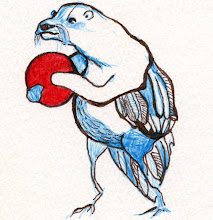At the end of my spring quarter, I left Columbus for a four month stint back in Philadelphia. I returned in order to work at the City of Philadelphia Mural Arts Program while also beginning to collect data for my masters thesis. The 50 lb or else baggage limit forbid me from bringing along my painting supplies, so I was forced to start over with new supplies for the summer. This struck me as the perfect opportunity to experiment with gouache, and so, after stocking up, I turned my attention to my typical subject matter: my space.
Except that it wasn't really my space. I had located a sublet on Craigslist, a big house filled with people in West Philly, the largest room of which served as my bedroom. When I arrived, a single suitcase of clothing in hand, the room was empty of decoration. A few things on the walls and a couple of books indicated that it had been lived in recently, but it was a mostly white, object-free environment. So, where I typically paint the things that clutter up my apartments, here I was challenged to paint exactly the opposite: the absence of things. I hoped, in my work, to capture the awkwardness that characterizes spending prolonged periods of time in a space not your own.
This is not to say that I didn't have a really wonderful summer. The house provided a friendly place full of interesting people and the streets and community organizations and coffee shops of Philadelphia fed my soul. I just never stopped feeling like I was sleeping in somebody else's bed and showering in somebody else's shower. I have rather the opposite problem in Columbus. In Columbus, I live in a beautiful, comfortable apartment that feels very much mine, but the city itself stubbornly refuses to cough up a sense of home. And so for these two years, I am stuck with a bit of a crack in my identity: my sense of home derived from occupying a living space full of my things cannot co-exist with my sense of home derived from being within a city that I love.








